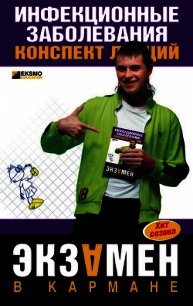Английский язык для медиков: конспект лекций - Беликова Елена (книги хорошего качества TXT) 📗
8. I usually get up at… quarter past seven.
9. I go to… bathroom, turn on… water and wash my face and hands.
10. My father and mother also get up early in. morning.
11. My mother works at… office.
12. She is. typist.
13. My father is… doctor.
14. He works at… polyclinic.
15. We have… breakfast in… kitchen.
16. We eat… porridge and… eggs.
17. We drink. tea.
18. My father and mother leave… home for… work at… half past eight.
19. My father goes to polyclinic, and my mother goes to. office.
20. I don't leave… home with my parents.
Answer the questions.
1. What does the extensive chapter cover?
2. What are blood suppfy and innervation reviewed for?
3. How may bones of the skull be classified?
4. Enumerate the bones of the neurocranium?
5. Enumerate the bones of the viscerocranium (deep)?
6. Enumerate the bones of the viscerocranium (surface)?
7. What is the lambda?
8. Where are the muscles of facial expression derived from?
9. What are the muscles of the scalp?
10. What are the muscles of the nose?
Make the sentences of your own using the new words (10 sentences).
Find the definite and indefinite articles in the text.
ЛЕКЦИЯ № 13. Neck
Cervical vertebrae: There are seven cervical vertebrae of which the first two are atypical. All cervical vertebrae have openings in their transverse processes, the foramina transversaria which, when aligned, produce a canal that transmits the vertbral artery and vein.
Atlas: This is the first cervical vertebra (C1). It has no body and leaves a space to accommodate the dens of the second cervical vertebra. Axis: This is the second cervical vertebra (C2). It has a tooth-shaped process, the dens (odontoid process), which articulates with the atlas as a pivot joint. Movement at this joint allows lateral rotation of the head. Hyoid bone is a small U-shaped bone, which is suspended by muscles and ligaments at the level of vertebra C3. It occupies the angle of the throat that separates the neck from the floor oral cavity.
Laryngeal prominence is formed by the lamina of the thyroid cartilage. It is more prominent in men than in women and children.
Cricoid cartilage. The arch of the cricoid, another laryngeal cartilage, is palpable below the thyroid cartilage and superior to the first tracheal ring (vertebral level C6). Triangles of the neck: The neck is divided into a posterior and an arterior triangle by the sternocleidomasto-id muscle. These triangles are subdivided by smaller muscles into six smaller triangles. Posterior triangle is bound by the sternocleidomasto-id, the clavicle, and the trapezius. The floor of the posterior triangle is formed by the splenius capitis, the levator scapulae, and the medial and posterior scalene muscles. Occipital triangle is located above the inferior belly of the omohyoid muscle. Its contents include the following: CN XI is the cranial nerve that supplies motor innervation to the tra-pezius and sternocleidomastoid muscles Cutaneous branches of the cervical plexus are the lesser occipital, great auricular, transverse cervical, and supaclavicular nerves.
Subclavian (omoclavicular, supraclavicular) triangle is located below the inferior belly of the omohyoid. Its contents include the following: Brachial plexus supraclavicular portion – roots, trunk the branches of which enter this region from behind the scalenus anterior muscle. The branches include the dorsal scapular, long thoracic, sub-clavius, and suprascapular nerves.
The third part of the subclavian artery enters the subclavian triangle from behind the scalenus anterior muscle anterior to the brachial plexus. Branches include the transverse cervical and suprascapular arteries.
The subclavian vein passes superficial to scalenus anterior muscle. It receives the external jugular vein, a superficial vein that crosses the sternocleidomastoid muscle.
Anterior triangle is bound by the sternocleidomastoid muse the mid-line of the neck, and the inferior border of the body of the mandible. Muscular triangle is bound by the sternocleidomastoid muscle, the superior belly of the omohyoid muscle, and the midline of the neck. Its contents include the infrahyoid (strap) muscles, which function to control movements the hyoid bone and larynx during speech and deglutition (swallowing). Carotid (vascular) triangle is bound by the ster-nocleidomastoid muscle, the superior belly of the omohyoid muscle and the posterior belly of the digastric muscle. The carotid triangle contains the following: Internal jugular vein; Common carotid artery, bifurcates at the upper border of the thyroid cartilage (i. e., vertebral level C3) to form the internal and external carotid arteries. The external carotid artery has six branches (i. e., the superior thyroid; the ascending pharyngeal, the lingual, the facial, the occipital, and the posterior auricular arteries). The supply structures of the neck and face; vagus nerve; hypoglossal nerve; internal and external laryngeal branches of the superior laryngeal branch of the vagus nerve. The internal laryge-al nerve conveys sensory information from the laryngeal mucosa above the level of the vocal folds, and the external laryngeal nerve supplies motor fibers to the cricothyroid, an intrinsic muscle of the larynx. Digastric (submandibular) triangle is bound by the anterior and posterior bellies of the digastric muscle and the inferi or border of the body of the mandible. The floor of this tri angle is formed by the hyoglos-sus and mylohyoid muscles. It contains the submandibular salivary gland. Submental triangle is bound by the anterior belly of the digastric muscle, the hyoid bone, and the midline of the neck. The floor of this triangle is formed by the mylohyoid muscle. It contains the submental lymph nodes. Root of neck: This area communicates with the superior medi astinum through the thoracic inlet. Structures of the region include the following: subclavian artery and vein. The subclavian artery passes poste rior to the scalenus anterior muscle, and the vein passes ante rior to it. Branches of the artery include: vertebral artery; thyrocervical trunk, which gives rise to the inferior thyroid, the transverse cervical, and the suprascapular arteries; Internal thoracic artery.
Phrenic nerve is a branch of the cervical plexus, which arises from C3, C4, and C5. It is the sole motor nerve to the diaphragm. It crosses the anterior scalene muscle from lateral to medial to enter the thoracic inlet.
Recurrent laryngeal nerve is a branch of the vagus nerve. This mixed nerve conveys sensory information from the laryngeal; mucosa below the level of the vocal folds and provides motor innervation to all the intrinsic muscles of the larynx except the cricothyroid muscle.
Thoracic duct terminates at the junction of the left subclavian and the left internal jugular veins. On the right side of the body, the right lymphatic duct terminates in a similar fashion.
Fascias of the neck: Superficial investing fascia encloses the platys-ma, a muscle of facial expression, which has migrated to the neck.
Deep investing fascia surrounds the trapezius and sternoclei – do-mastoid muscles.
Retropharyngeal (visceral) fascia surrounds the pharynx.
Prevertebral fascia invests the prevertebral muscles of the nee (i. e., longus colli, longus capitis). This layer gives rise to a derivative known as the alar fascia.
The major muscle groups and their innervations. A simple method of organizing the muscles of the neck is based on two basic principles: (1) The muscles may be arranged in group according to their functions; and (2) all muscles in a group share common innervation with one exception in each group.




